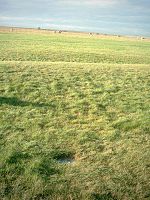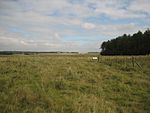Stonehenge Free Festival

The Stonehenge Free Festival was a British free festival from 1974 to 1984 held at the prehistoric monument Stonehenge in England during the month of June, and culminating with the summer solstice on or near 21 June. It emerged as the major free festival in the calendar after the violent suppression of the Windsor Free Festival in August 1974, with Wally Hope providing the impetus for its founding, and was itself violently suppressed in 1985 in the Battle of the Beanfield, with no free festival held at Stonehenge since although people have been allowed to gather at the stones again for the solstice since 1999. By the 1980s, the festival had grown to be a major event, attracting up to 30,000 people in 1984. The festival attendees were branded as hippies by the British press. This, along with the open drug use and sale, contributed to the increase in restrictions on access to Stonehenge, and fences were erected around the stones in 1977. The same year, police resurrected a moribund law against driving over grassland in order to levy fines against festival goers in motorised transport. By 1984 police–festival relations were relaxed with only a nominal police presence required.
Excerpt from the Wikipedia article Stonehenge Free Festival (License: CC BY-SA 3.0, Authors, Images).Stonehenge Free Festival
A303,
Geographical coordinates (GPS) Address Phone number Website Nearby Places Show on map
Geographical coordinates (GPS)
| Latitude | Longitude |
|---|---|
| N 51.178888888889 ° | E -1.8261111111111 ° |
Address
Stonehenge
A303
SP4 7DE , Amesbury
England, United Kingdom
Open on Google Maps









